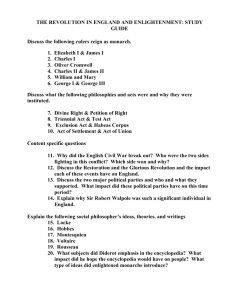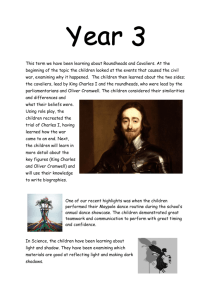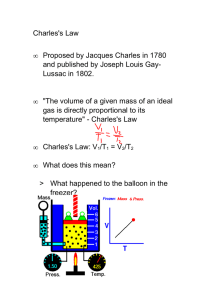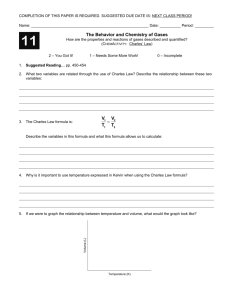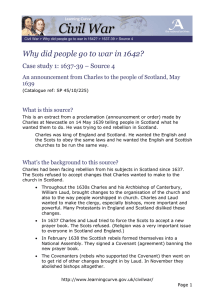Info Card
advertisement
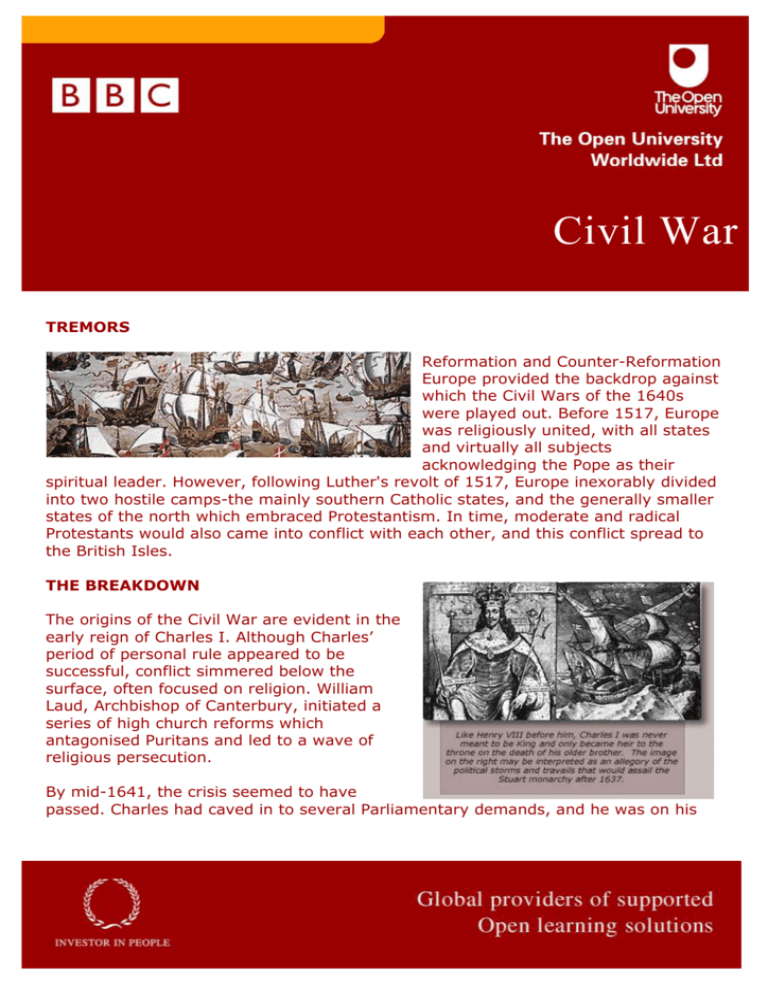
Civil War TREMORS Reformation and Counter-Reformation Europe provided the backdrop against which the Civil Wars of the 1640s were played out. Before 1517, Europe was religiously united, with all states and virtually all subjects acknowledging the Pope as their spiritual leader. However, following Luther's revolt of 1517, Europe inexorably divided into two hostile camps-the mainly southern Catholic states, and the generally smaller states of the north which embraced Protestantism. In time, moderate and radical Protestants would also came into conflict with each other, and this conflict spread to the British Isles. THE BREAKDOWN The origins of the Civil War are evident in the early reign of Charles I. Although Charles’ period of personal rule appeared to be successful, conflict simmered below the surface, often focused on religion. William Laud, Archbishop of Canterbury, initiated a series of high church reforms which antagonised Puritans and led to a wave of religious persecution. By mid-1641, the crisis seemed to have passed. Charles had caved in to several Parliamentary demands, and he was on his way north to make his peace with the Scots. However, just at this moment, Ireland exploded in rebellion and the three kingdoms were hurtling towards a fresh crisis. TAKING SIDES By mid-1641, Charles had settled his differences with the English Parliament and was on his way north to make peace with the Scots. When Ireland exploded in rebellion in November, it drew the sovereign into conflict with his subjects and set the three kingdoms on the path to prolonged and bloody conflict. Charles' departure from London and the growing rift with Parliament forced people to start taking sides during 1642. Family ties and longstanding friendships were placed under intolerable pressure as the country started to polarise. When Charles raised his standard at Nottingham in August 1642, the scene was set for war. TOTAL WAR After the uncertainties of 1642-43 and the Royalist advances of 1643, the war entered a crucial phase during 1644-45. The Parliamentarians won an outstanding victory at Marston Moor in July 1644 which gave them control of the north of England. However, the Royalists continued to enjoy spectacular successes, especially in Scotland where Montrose enjoyed his 'year of miracles'. The second Battle of Newbury was inconclusive and the Parliamentary commanders seemed strangely unwilling to capitalise on their victories. THE ENDGAME Four years of war had radicalised the Parliamentary troops, and Leveller ideas were extremely popular within the New Model Army. In October 1647, Army Grandees and 'agitators' met to discuss Leveller ideas in Putney Church but for propertyowners such as Oliver Cromwell, the ideas of men such as Thomas Rainsborough were too extreme and the debates were wound up. Agitators who continued to expound Leveller ideas in their regiments were shot. AFTERSHOCKS Charles I’s execution solved one problem but created others- who would govern? And with what legitimacy? Politically dominant by 1649, Cromwell made several attempts to fashion a lasting political solution during the years of the Republic 1649- 60. Cromwell died in September 1658 and was succeeded by his son, Richard. However, as the state drifted towards anarchy during 1659, only one solution seemed possible and so, in May 1660, the Stuarts were restored to their thrones in the person of Charles II.


